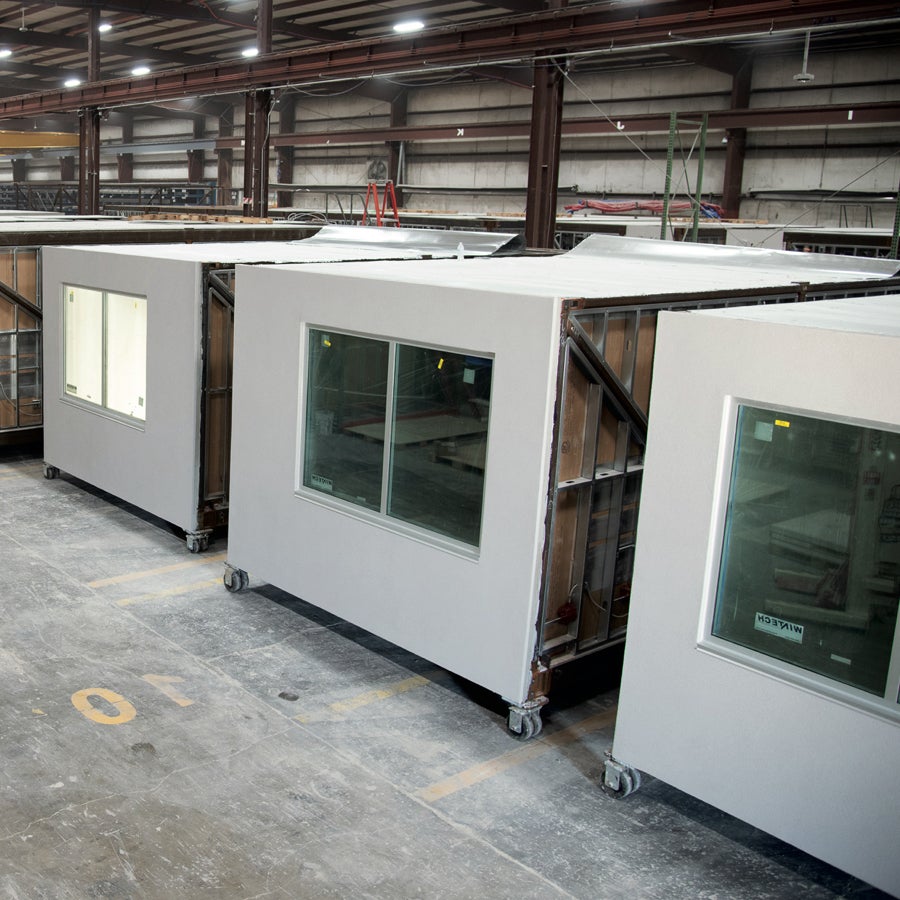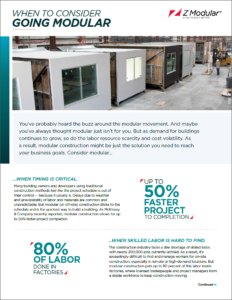November 13, 2019
When to Consider Going Modular

You’ve probably heard the buzz around the modular movement. And maybe you’ve always thought modular just isn’t for you. But as demand for buildings continues to grow, so do the labor resource scarcity and cost volatility. As a result, modular construction might be just the solution you need to reach your business goals. Consider modular…
…WHEN TIMING IS CRITICAL.
Many building owners and developers using traditional construction methods feel like the project schedule is out of their control — because it usually is. Delays due to weather and unavailability of labor and materials are common and unpredictable. But modular (or off-site) construction sticks to the schedule and is the quickest way to build a building. As McKinsey & Company recently reported, modular construction allows for up to 50% faster project completion.
…WHEN SKILLED LABOR IS HARD TO FIND.
The construction industry faces a dire shortage of skilled labor, with nearly 200,000 jobs currently unfilled. As a result, it’s exceedingly difficult to find and manage workers for on-site construction, especially in remote or high-demand locations. But modular construction puts up to 80 percent of this labor inside factories, where licensed tradespeople and project managers form a stable workforce to keep construction moving.
…WHEN YOU WANT BUDGET CERTAINTY.
The costs of on-site construction often far exceed the original estimate because of weather delays, rework and unexpected supply-chain expenses. But modular construction can virtually eliminate those risks by completing most of the work in climate-controlled factories with a built-in material supply chain and upfront cost estimation / decision-making. The process allows for 98% greater project predictability, keeping costs right on target.
…WHEN YOU’RE PLANNING MULTIPLE BUILDINGS.
Modular construction brings efficiency to one-off projects, and the cost and time savings become exponential when plans entail multiple buildings of the same type. That’s because the same schematic and 3D designs can be reused for each structure, and materials can be purchased in bulk. Hotel owners and multifamily housing developers, for example, can reduce time to occupancy and save millions of dollars with modular construction.
…ANYTIME BEFORE CONSTRUCTION BEGINS.
Regarding the timeline for a specific project, you should consider a modular approach before the design phase or in its early stages. This way, if you do go modular, the whole project team can move forward with the modular efficiencies and dimensions in mind. While it would technically be possible to convert a design to modular at any point before construction begins, delaying the decision would mean you’d lose the time and money already invested in the traditional design, and it might require adjustments to some design details in order to take full advantage of the modular approach.
The time to consider modular is now.
Contact us today.
Download this article in PDF format.
